Level up your mass timber IQ & stay up-to-date on industry trends

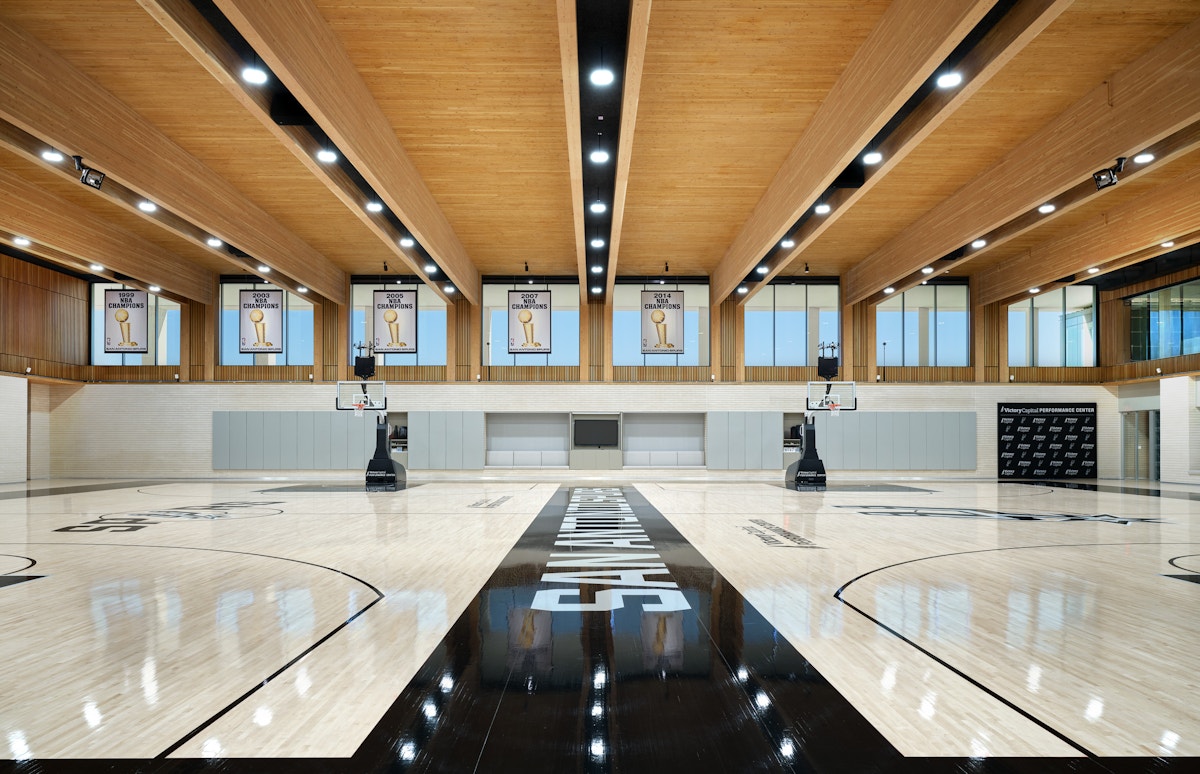
Have you ever considered how the built environment impacts elite athletic performance? In a world where every competitive edge counts, the San Antonio Spurs, a franchise synonymous with championship success, have unveiled a groundbreaking answer: the Victory Capital Performance Center.
Completed in 2023, this state-of-the-art training facility isn't just a new home for the Spurs; it's a testament to revolutionary design and sustainable construction, setting new benchmarks in professional sports. As the largest mass timber training facility in U.S. professional sports, and at nearly 140,000 square feet, the largest mass timber structure in Texas upon its completion, this project is truly changing the game. This facility, a partnership between Spurs Sports & Entertainment and Lincoln Property Company, integrates cutting-edge features with a profound commitment to human wellness and environmental stewardship.
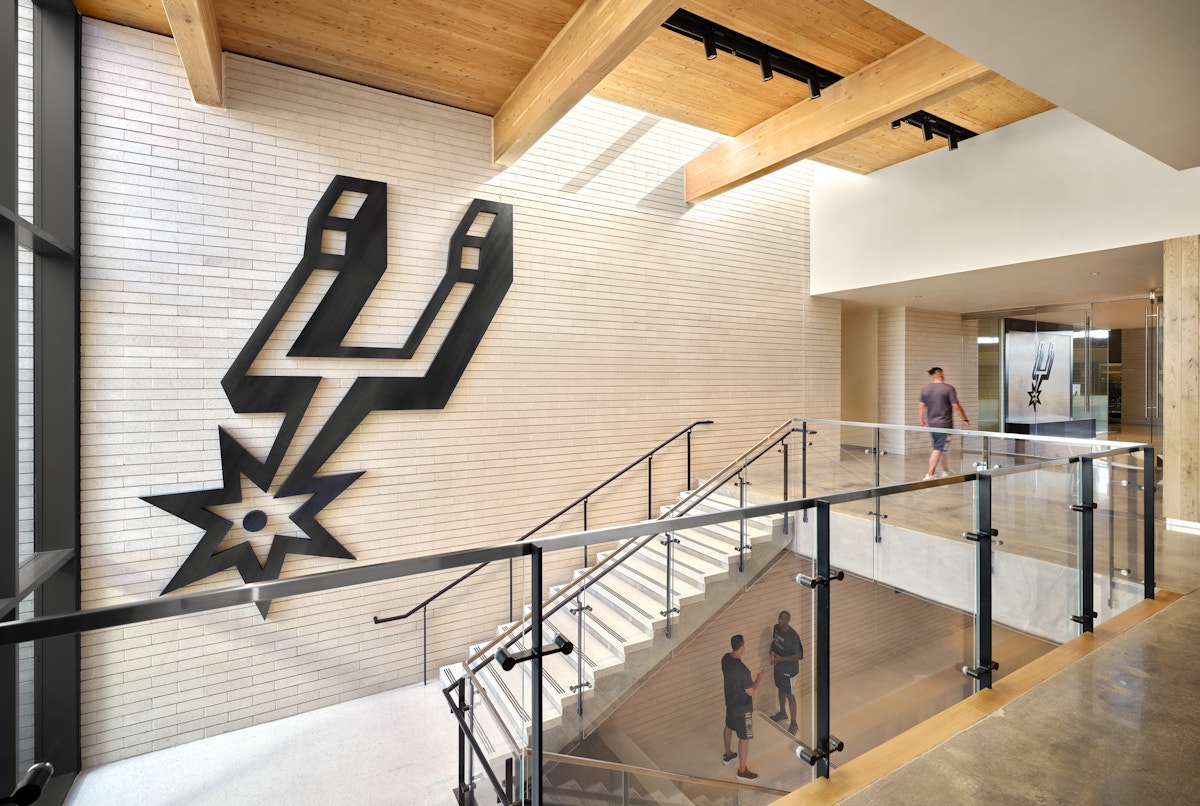
What truly sets the Victory Capital Performance Center apart is its dedication to athlete well-being, both physical and mental. ZGF Architects, the project architect, embarked on a meticulous benchmarking process, studying facilities globally to understand the intricate needs of athletes.
What did they find?
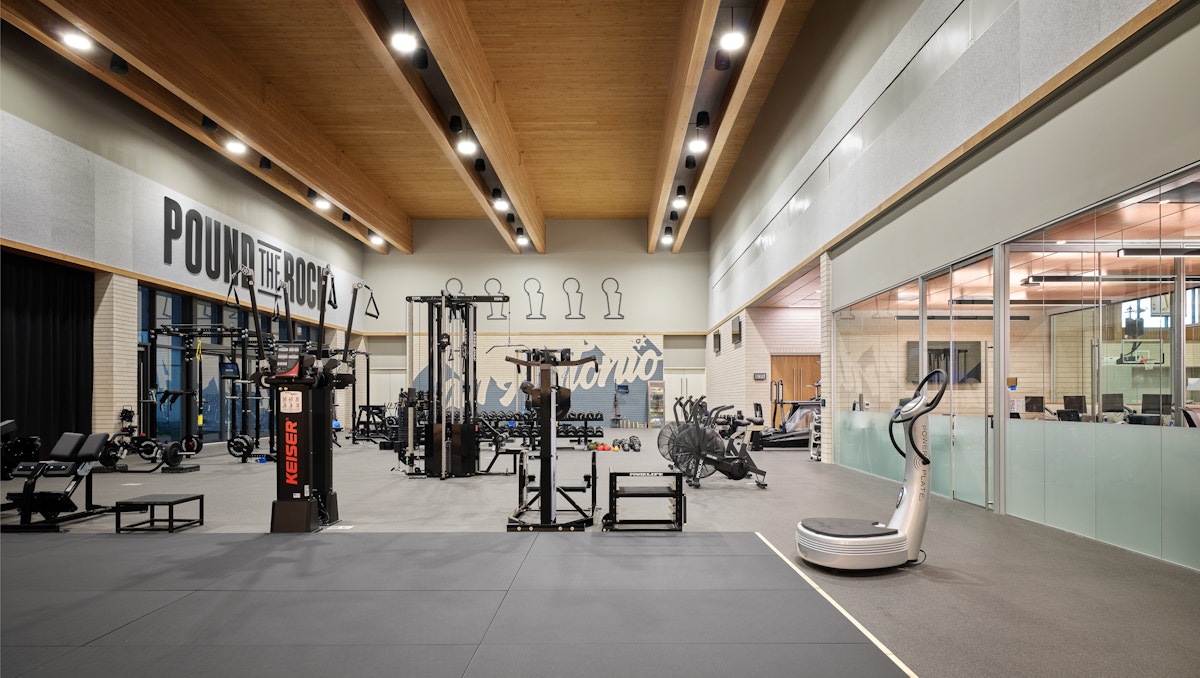
A critical insight: professional athletes often live in an endless cycle of travel with no time outside, disrupting their rhythm and recovery. This realization became a core design driver to infuse the facility with natural light, exposed wood, views, and spaces that prioritize circadian rhythms and rest as much as training.
This is a space where every element contributes to peak performance. The biophilic design approach meant consciously choosing materials and layouts that foster a connection to nature. For instance, mass timber, with its visible wood grain and lack of off-gassing, emerged as a standout material for its natural properties and ability to support athlete well-being under constant pressure.
Occupants can step outside from almost any primary space, from alfresco dining zones to garden recovery areas and balconies for outdoor calls. Even the practice courts, typically relegated to artificial light, are bathed in natural light through clerestory windows, with motorized sun shades to control glare. As Kathy Shaloo Berg, FAIA of ZGF Architects explains, "Focusing on athlete health means choosing materials carefully, with wood standing out for its natural properties and lack of off-gassing, enhanced by advancements in non-toxic glues," - ThinkWood.
The natural elements and connection to the outdoors helps players feel more grounded and supported, mitigating the stresses of constant travel.
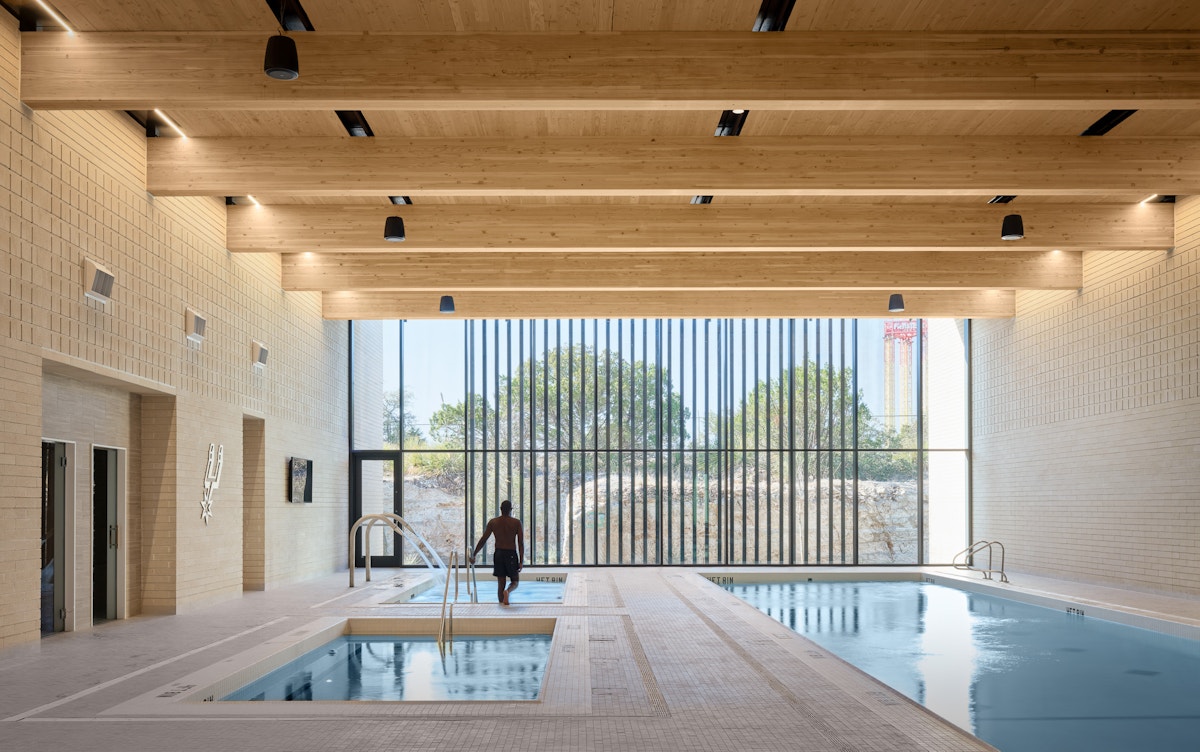
Beyond performance, the facility tells a story—a story deeply rooted in San Antonio's rich confluence of culture, sports, and history. Rather than a generic sports venue, the team at ZGF aimed for a design "truly indicative of its setting".
The result?
A contemporary nod to the region’s iconic Mission-style architecture, characterized by masonry walls supporting heavy exposed timber beams and roofs, and an integration of courtyards and arcades.
Kristina Thompsen, Project Manager, ZGF Architects noted what stood out to her: “The intense desire from the Spurs to promote their culture and values of Grit, Respite, Work and Recovery. We incorporated these values with the choice of materials and particularly mass timber. The inherent nature of wood itself encompasses all of these values, and it turned out to be a cost savings over a traditional steel joist system.”
The facility's unadorned materiality, featuring exposed cross-laminated timber (CLT), glulam beams, and concrete masonry units (CMU), reflects this regional authenticity. The extensive use of colonnades provides shelter, shading, and intuitive navigation, while open courtyards seamlessly blend indoor and outdoor spaces—a practical adaptation for Texas's variable climate. The project's location on a 22-acre (or 25-acre) site, formerly a limestone quarry, also inspired its name, "The Rock at La Cantera". This name, and the design elements like repetitive columns and cloisters, draw from journalist Jacob Riis's quote on persistence and breakthrough—the Spurs' enduring slogan, "Pound the rock".
As Berg eloquently puts it, "The interplay of these repetitive structures with the unique San Antonio sunlight is quite beautiful and comes alive throughout the day—almost acting like a make-shift sundial". - Think Wood
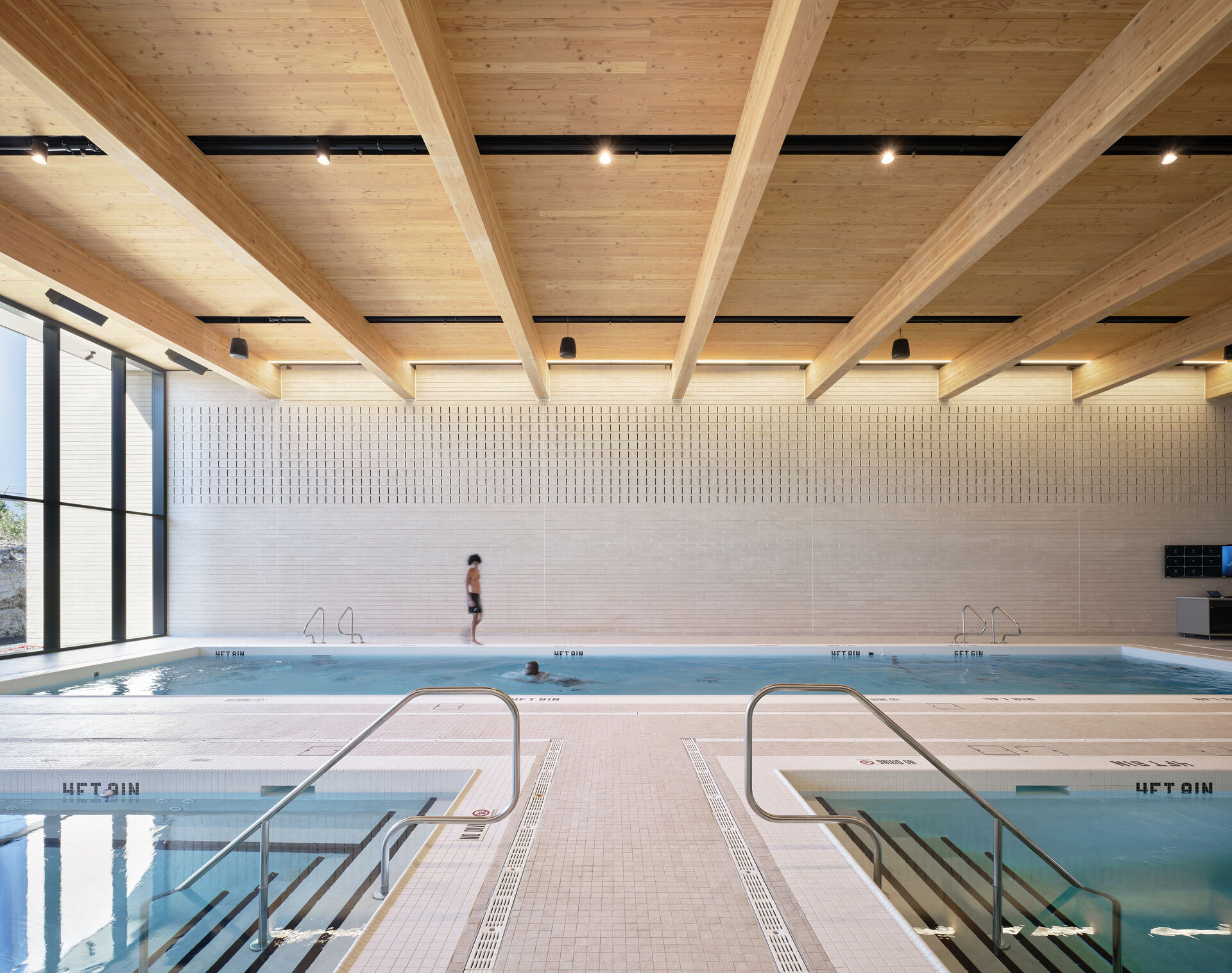
The choice of mass timber was not merely aesthetic or philosophical; it was a strategic decision driven by sustainability, performance, and efficiency. The facility's primary structure consists of glued-laminated timber (glulam) columns and beams spanned by cross-laminated timber (CLT) decking, supported by masonry shear walls. Arup, the structural engineer, played a vital role in guiding this design, recognizing mass timber's significantly lower carbon footprint compared to traditional concrete and steel.
This project pushed the boundaries of what's possible with long-span wood construction. It utilizes the largest continuous glulams on the market, with 20 beams, each an impressive 130 feet long and 75 inches deep (or 6.5 feet tall), to achieve its vast, column-free interior. The ingenuity extends to concealing steel knife plates and bolt connections behind at least two inches of wood, creating a clean, seamless aesthetic. The double glulam beams house fire suppression, and lighting conduits, while Douglas fir fins tuck away acoustic materials and return air louvers to reduce sound reverberation.
“One of the biggest challenges was getting a structural beam to span the length of a basketball court. The double beams that we have in the courts are the largest mass timber beams that are made. We also had the challenge of fitting our mechanical and electrical systems in the pockets between the beams, so the coordination between the various disciplines was critical.” - Kristina Thompsen, ZGF Architects.
The environmental benefits are equally compelling. The structural wood in the Victory Capital Performance Center sequesters the carbon equivalent of taking over 420 passenger cars off the road for a year, or approximately the amount of carbon sequestered by nearly 2,300 acres of U.S. forest in one year of growth. This makes mass timber a renewable, carbon-sequestering alternative that stands in stark contrast to carbon-intensive structural materials.
"This project proves mass timber isn't just sustainable: its innovation and suitability make it ready for high-profile spaces." - Eleonora Dalfovo, MTC Solutions
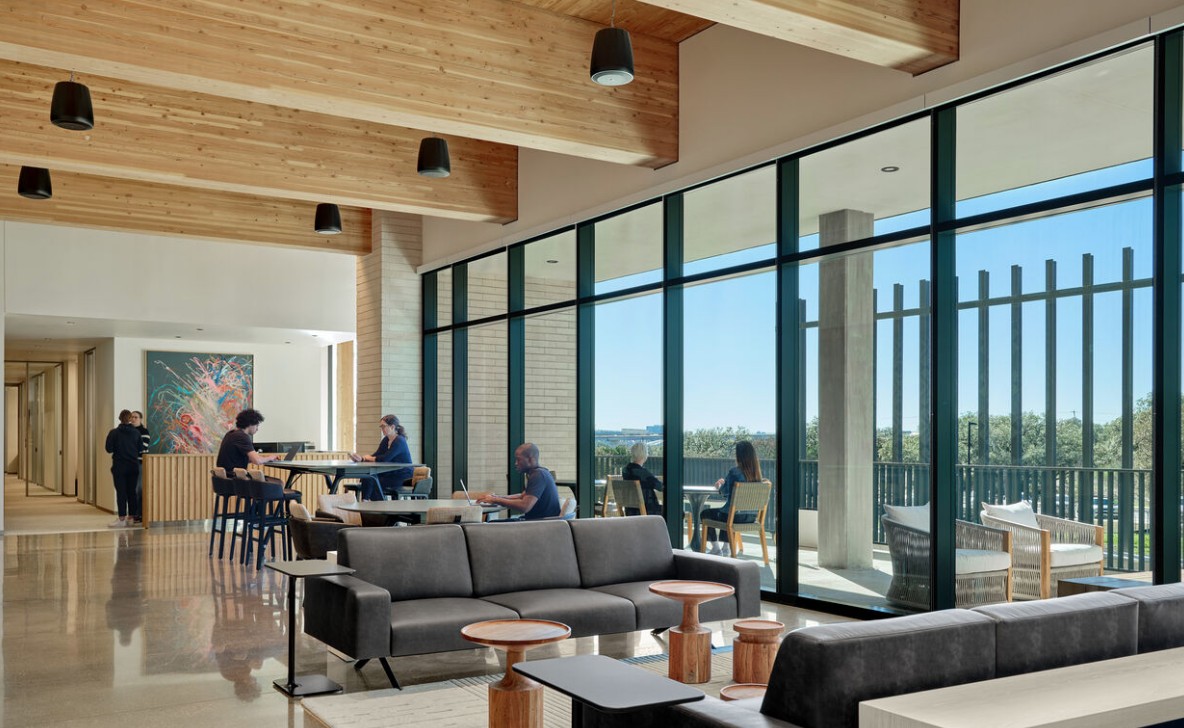
The journey to completion was not without its hurdles. Joeris, the general contractor, highlighted the challenges, including delays caused by the COVID-19 pandemic, necessitating a collaborative approach to manage budgetary constraints and material supply chain disruptions. Site-specific complexities, such as navigating a rock shelf, required customized foundation solutions. Furthermore, ensuring seamless communication was paramount, given that architects and engineers were located out-of-state.
Arup's engineering expertise was critical in navigating these complexities and achieving the ambitious design goals. They implemented an "energy-efficient overhead displacement ventilation system" in the practice courts and strength and conditioning spaces to maintain comfort and minimize exposed ductwork, while also conducting computational fluid dynamics (CFD) analyses to confirm performance. For the elevated court, Arup even analyzed the floor structure and column placement below to prevent undesirable vibration, ensuring optimal player performance. MTC Solutions contributed significantly by supplying structural hardware, with Eleonora Dalfovo emphasizing the importance of early communication with all parties to understand specific requirements and match them with the right product, ensuring timely on-site delivery and proper installation training. Her team successfully supported a product swap to meet precise requirements.
Beyond structural integrity, Arup's lighting design incorporated tuneable circadian lighting in player areas to improve mental and metabolic function, aligning with the project's biophilic goals. The integration of services with exposed structural elements was carefully planned to maximize visibility of the architecturally exposed mass timber.
“The result is absolutely stunning, with every mass timber element adding a sense of warmth and character that only this material can provide… We look forward to seeing how this project inspires other professional organizations to explore the potential of mass timber in the future.” - Trevor MacKay, SmartLam North America™
The Victory Capital Performance Center is more than just an exclusive training ground for professional athletes; it's envisioned as the heart of a larger 22-acre (or 25-acre) wellness hub, "The Rock at La Cantera". This development will include an events plaza, parks, a human performance research center, wellness centers, and a team store. The facility deliberately balances the players' need for private, restorative spaces with the public's desire to connect with their team. Joeris emphasized this community focus, noting the inclusion of outdoor public spaces like a splash pad, food truck area, and a large screen for fans to gather year-round, underscoring the belief that sports complex construction should serve the broader community. The Spurs Plaza at the front of the structure welcomes the community to gather, watch games on a large screen, and enjoy local cuisine.
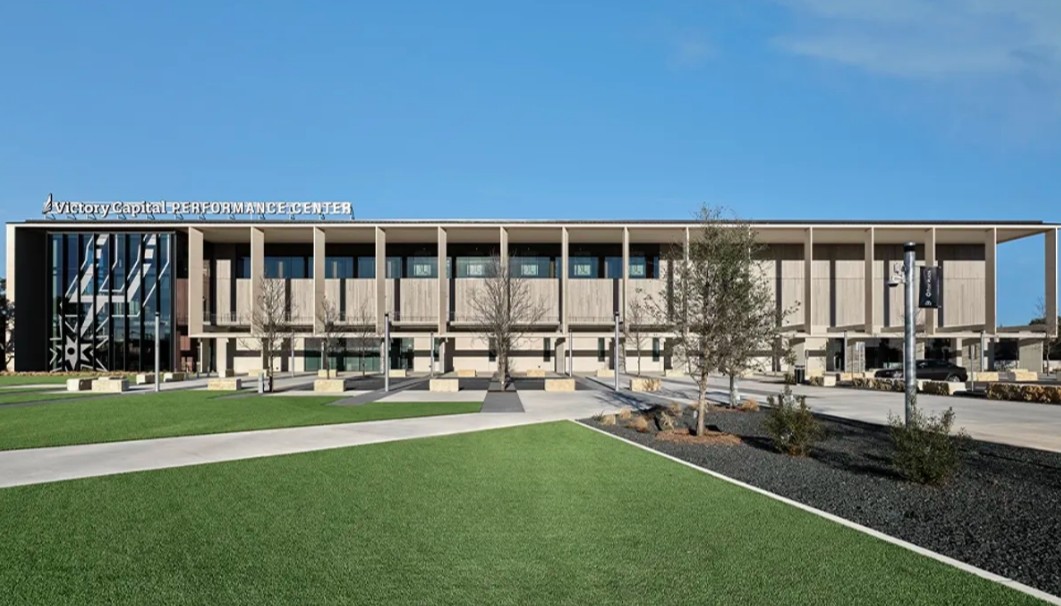
The completion of the Victory Capital Performance Center marks a significant milestone, not just for the San Antonio Spurs, but for the entire professional sports and construction industries. Spurs CEO R.C. Buford lauded the facility, stating,
"As a result of ZGF’s ingenuity and eye for revolutionary and human-centered design, this facility gives us a competitive edge in sports technology and performance and an opportunity to leverage sustainable innovations such as mass timber and solar energy production to ensure a positive impact on the world around us". - Forbes
The overwhelming positive feedback from management and players alike, particularly regarding the quality of light, connection to the outdoors, and the feel of the timber-exposed interior, suggests a promising future.
As Berg concludes, "I think it can encourage new possibilities for using more wood in professional sport facilities in the future".
The Victory Capital Performance Center proves that mass timber is not just a sustainable alternative but a material choice ready for the highest-profile, performance-driven spaces. This project serves as an example for how to integrate advanced athletic needs with a strong sense of place and a deep commitment to human and environmental well-being.
Frequently Asked Questions (FAQs):

Lead mass timber projects with confidence — and leave delays, redesigns, and budget blowups behind.
✅ Solve early-stage design, sourcing, insurance, permitting, code & cost hurdles before they derail your project.
✅ Find technical answers on design, detailing, procurement, embodied carbon ROI, hybrid systems & more.
✅ Build relationships with developers, GCs, architects, and engineers shaping mass timber’s future.
Get your ticket— and get the insights, skills, and network to deliver mass timber projects successfully.


.png)

.jpg)